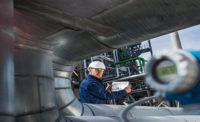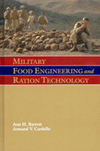Engineering R&D
Endress+Hauser introduces self-calibrating thermometer
When calibrating temperature sensors/transmitters involves many auditable thermometers, self-calibration saves time and money

Alfred Umkehrer, Endress+Hauser head of Division R&D Temperature
Photos courtesy of Endress+Hauser



Calibrating your thermometers to either a PM or regulatory schedule can be a tedious operation, especially if you have dozens or more involved in the process. How much time can you afford in downtime while you remove the devices from the process, do the calibrations and the supporting paperwork and reinstall them?
Endress+Hauser heard the voice of its customers and decided it was time to see if it was possible to develop a technology for a self-calibrating thermometer, one that could also do the audit-trail paperwork as well. Not only was it possible, but by the end of 2017, Endress+Hauser was ready to announce the availability of its iTHERM TrustSens self-calibrating thermometer, which Endress+Hauser claims to be the world’s first such device.
Depending on the process, TrustSens will perform calibrations considerably more often than typical manual calibration cycles. The device provides high measurement accuracy through characteristic adjustment or sensor-transmitter matching, and meets several international specifications including EHEDG, FDA, 3-A, CE and more. The sensor/transmitter has a range from -40 to +160°C (-40 to 320°F), and is available in more than 50 sterile and hygienic process connections.
FE interviewed Alfred Umkehrer, Endress+Hauser head of Division R&D Temperature to learn more about the development history, design and theory of operation of the device. Umkehrer has 30 years of experience in the field of R&D.
FE: When did the development of the self-calibrating thermometer begin, and when did it become a real product?
Alfred Umkehrer: Development began in 2006 with feasibility studies aimed at identifying ways to integrate a fully-traceable, fixed reference element into the sensor tip, where space is a luxury we can’t afford. This quickly led us to deep-dive into the realm of physics, when we discovered a unique way of making use of the Curie temperature (Tc). One of the major challenges consisted of miniaturizing the element before starting prototype production. Our engineers really did a fantastic job! A long and thorough testing phase confirmed that we were on the verge of a technological breakthrough. By 2015, we had successfully conducted the first field trials. The product officially launched in 2017.
FE: Did you have academic and/or research collaboration in the development process?
Umkehrer: When we looked at the problem we knew that we were going to navigate uncharted waters in temperature measurement. We sought close collaboration with the Technische Universität Ilmenau, a top tier research institution in the field of metrology as well as the Fraunhofer IKTS Institute for Material Science, both partnerships yielding fantastic results for all sides.
FE: Is there one or more patents or applied-for patents?
Umkehrer: Endress+Hauser is recognized for its high level of innovation, with more than 260 patent filings in 2017 alone. What’s more important to us, however, is the series of tests and certification marks by independent third-party organizations such as the well-respected German technical service organization, TÜV, which helped us generate the necessary trust among early adopters. In the world of process automation in particular, trust is a major factor for delivering tangible value in heavily regulated industries. Hence the namesake for iTHERM TrustSens.
FE: How much time typically would be spent in manual calibration of a conventional temperature sensor/transmitter?
Umkehrer: Continuous inline self-calibration and monitoring with iTHERM TrustSens offers a host of advantages compared to a traditional setup and manual calibration, key of which are risk reduction and increased plant uptime. We anticipate that the average time effort for manual calibration from start to finish (including removal, calibration, installation and documentation) typically varies between 30 to 60 minutes per measurement point. That can be a real challenge for quality managers, maintenance staff and controllers alike. Thanks to a permanent inline calibration, the technology reduces the calibration intervals from every 6-12 months to once a day or more.
During manual calibration, external and environmental factors such as room temperature or human error can have an impact on the calibration result and potentially expose the process to contamination. Our device offers food processors a fully-automated inline solution that combines higher safety and full confidence in their process at reduced effort and cost.
FE: Thermometers are often calibrated in ice and/or oil baths. What reference temperature source does the TrustSens device use? What is the base temperature sensor (e.g., T/C, RTD, thermistor, etc.)?
Umkehrer: The device’s sensor unit consists of a primary Pt100 temperature sensor that self-calibrates against an integrated ceramic element using the material-specific Tc (approx. 118°C/244.4°F). It is issued ex-works with a calibration certificate for the fixed-point reference’s individual calibration point, which can be traced back to the International Temperature Standard ITS-90. Under normal process conditions, the Tc of a ceramic element is not subject to drift, and thus does not require recalibration. Its long-term stability has been certified by TÜV.
FE: How does the TrustSens self-calibrating thermometer work?
Umkehrer: The thermometer’s integrated transmitter electronics analyzes potential deviations between the primary Pt100 sensor’s and the fixed-point reference’s values (ΔT), effectively performing a calibration of the Pt100.
FE: Does the TrustSens require any manual calibration or configuration on first-time installation? How many calibration points/cycles can it remember?
Umkehrer: No. The device comes pre-calibrated from the factory and provides plug-and-play capability for our customers’ existing process and systems. It delivers accurate and reliable self-calibration once installed, with its built-in memory for up to 350 calibration cycles.
FE: Does TrustSens warn of declining functionality? Does it let users know when to take action?
Umkehrer: Absolutely, although we have yet to hear of a failing device. iTHERM TrustSens with Heartbeat Technology performs regular, event-induced, fully automatic device self-checks without interrupting the process, preventing undetected “out-of-specification” states of the device. If following a calibration, the measured ΔT is outside of the limits set by the operator, the device generates an alarm and/or error message, which is also indicated on-site via the LED integrated in the device.
FE: What is needed to generate auditable calibration certificates?
Umkehrer: Calibration data and a valid, audit-proof calibration certificate can be downloaded (via HART protocol) from the device at any time with a simple click and by using software such as FieldCare by Endress+Hauser. This provides a clear advantage in terms of process safety, transparency and regulatory compliance.
FE: What are the most common configurations for food and beverage applications?
Umkehrer: A wide range of applications in the food and beverage industry come to mind, mainly in plants and processes using SIP (steam sterilization), such as in dairies, as part of the bottling or heating process, etc. (as long as process temperatures exceed 123°C or 253.4°F for a period > 25sec).
For more information, visit www.us.endress.com
Looking for a reprint of this article?
From high-res PDFs to custom plaques, order your copy today!












